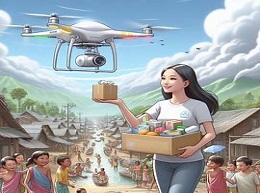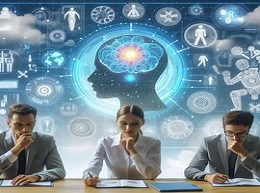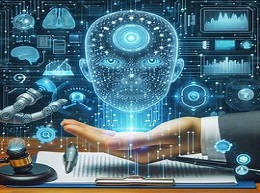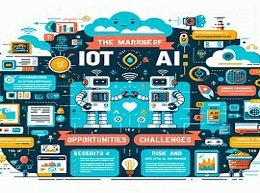AI in Humanitarian Aid: Using Technology for Social Good

Harnessing AI for Humanitarian Aid
In recent years, artificial intelligence (AI) has emerged as a powerful tool for addressing humanitarian challenges and improving the lives of vulnerable populations worldwide. From disaster response and healthcare to food security and education, AI technologies are being deployed to facilitate more effective and efficient humanitarian aid efforts. This article explores the transformative impact of AI in humanitarian aid and showcases examples of its applications in various domains.
Disaster Response and Relief Efforts
AI-Powered Predictive Analytics
AI algorithms analyze vast amounts of data, including satellite imagery, social media posts, and weather forecasts, to predict and preempt natural disasters such as hurricanes, earthquakes, and floods, enabling timely evacuation and resource allocation.
Example: IBM's Disaster Response Solution
IBM's Disaster Response Solution uses AI and machine learning to analyze real-time data from multiple sources and provide insights for disaster preparedness and response. By identifying areas at high risk of flooding or landslides, authorities can take proactive measures to mitigate the impact on vulnerable communities.
Healthcare and Medical Assistance
Disease Detection and Diagnosis
AI algorithms trained on medical data can detect patterns and anomalies indicative of disease outbreaks, enabling early detection and intervention to prevent the spread of infectious diseases and improve healthcare delivery in underserved areas.
Example: Diagnosing Malaria with AI
Researchers have developed AI-based diagnostic tools that analyze blood samples to detect malaria parasites quickly and accurately, especially in regions where access to healthcare facilities and trained personnel is limited. This technology aids in early diagnosis and treatment, saving lives and reducing the burden on healthcare systems.
Food Security and Agricultural Development
Crop Monitoring and Yield Prediction
AI-powered drones and satellites capture high-resolution imagery of farmland, enabling farmers to monitor crop health, detect pest infestations, and predict yields accurately. This information helps optimize agricultural practices and ensure food security for vulnerable communities.
Example: FarmBeats by Microsoft
Microsoft's FarmBeats platform leverages AI, IoT sensors, and cloud computing to provide farmers with real-time insights into soil moisture levels, crop growth, and weather conditions. By empowering farmers with data-driven decision-making tools, FarmBeats contributes to sustainable agriculture and poverty alleviation.
Education and Skill Development
Personalized Learning Solutions
AI-based educational platforms adapt learning materials and activities to individual students' needs and learning styles, enabling personalized instruction and skill development in areas such as literacy, numeracy, and vocational training.
Example: Learning Equality's Kolibri
Kolibri is an open-source educational platform that uses AI algorithms to deliver interactive learning content offline, bridging the digital divide and providing quality education to underserved communities in remote areas with limited internet access. By tailoring content to local contexts and languages, Kolibri promotes inclusive and equitable education for all.
Challenges and Ethical Considerations
While AI holds great promise for humanitarian aid, it also poses challenges and ethical considerations that must be addressed to maximize its positive impact:
Data Privacy and Security
Safeguarding sensitive data, including personal health information and demographic data, is crucial to protect the privacy and rights of individuals, especially in humanitarian contexts where data may be collected for aid purposes.
Bias and Fairness
AI algorithms trained on biased or incomplete data may perpetuate inequalities and exacerbate social disparities, particularly in decision-making processes related to resource allocation, healthcare, and education.
Accountability and Transparency
Ensuring accountability and transparency in AI systems is essential to build trust and credibility among stakeholders, including governments, aid organizations, and affected communities. Clear guidelines and mechanisms for oversight and accountability are needed to address concerns about algorithmic decision-making and its impact on human lives.
AI for Good
As the world faces increasingly complex humanitarian challenges, AI offers unprecedented opportunities to innovate and collaborate in addressing global crises and advancing social good. By harnessing the power of AI technologies in disaster response, healthcare, agriculture, education, and beyond, we can build a more resilient, inclusive, and sustainable future for all. Together, let's leverage AI for good and make a positive difference in the lives of the most vulnerable among us.













